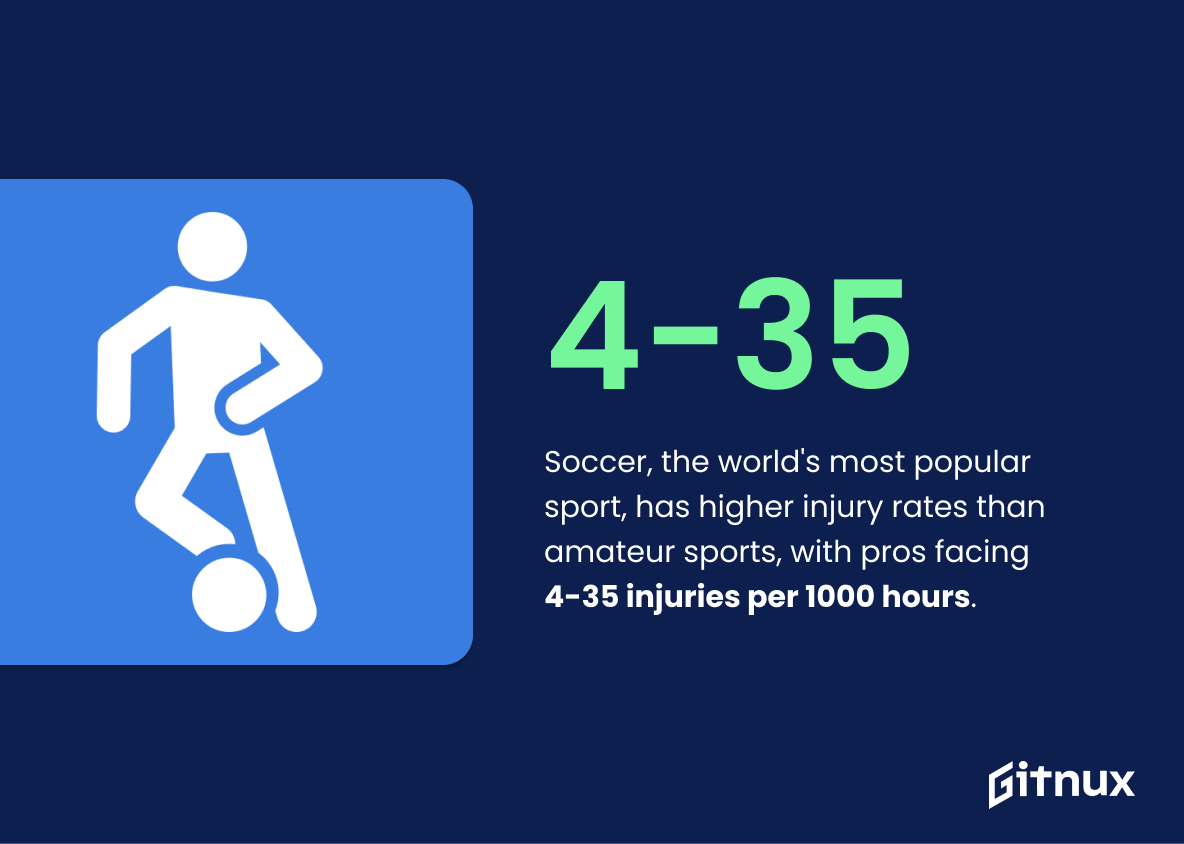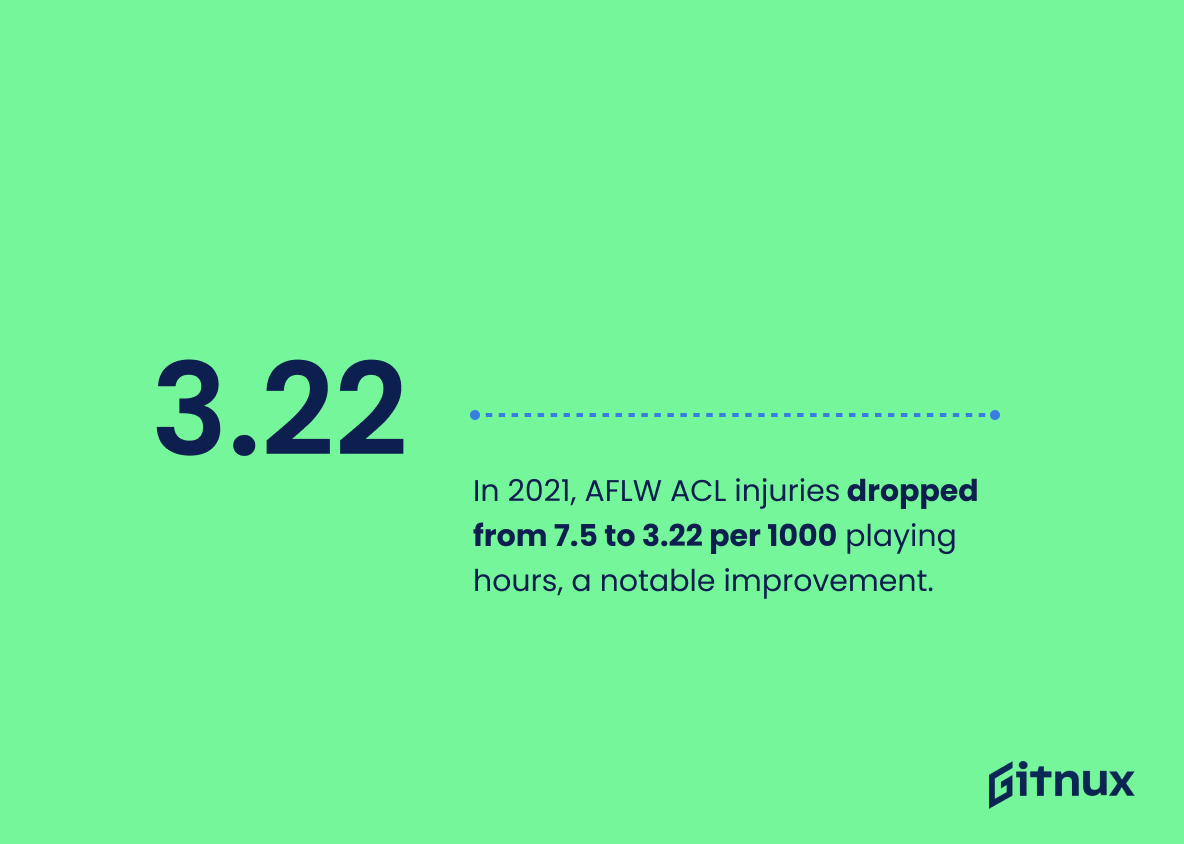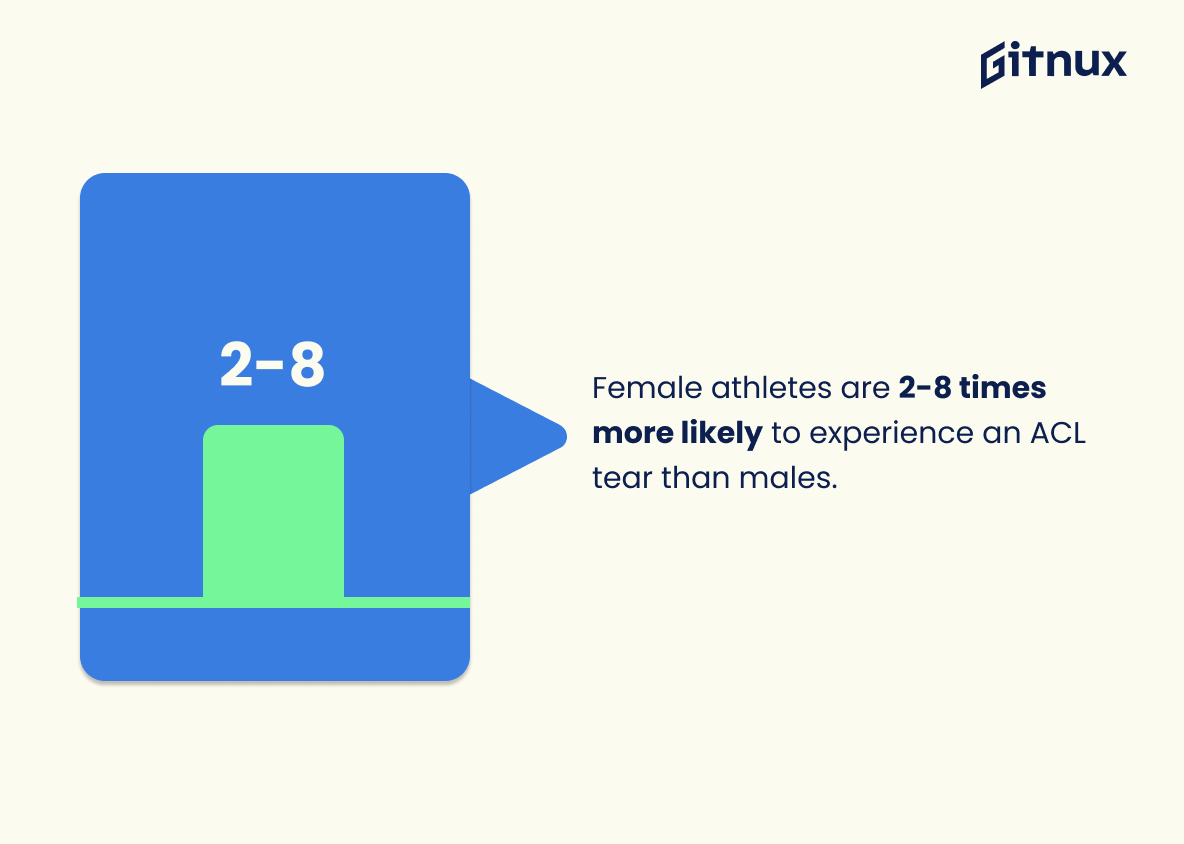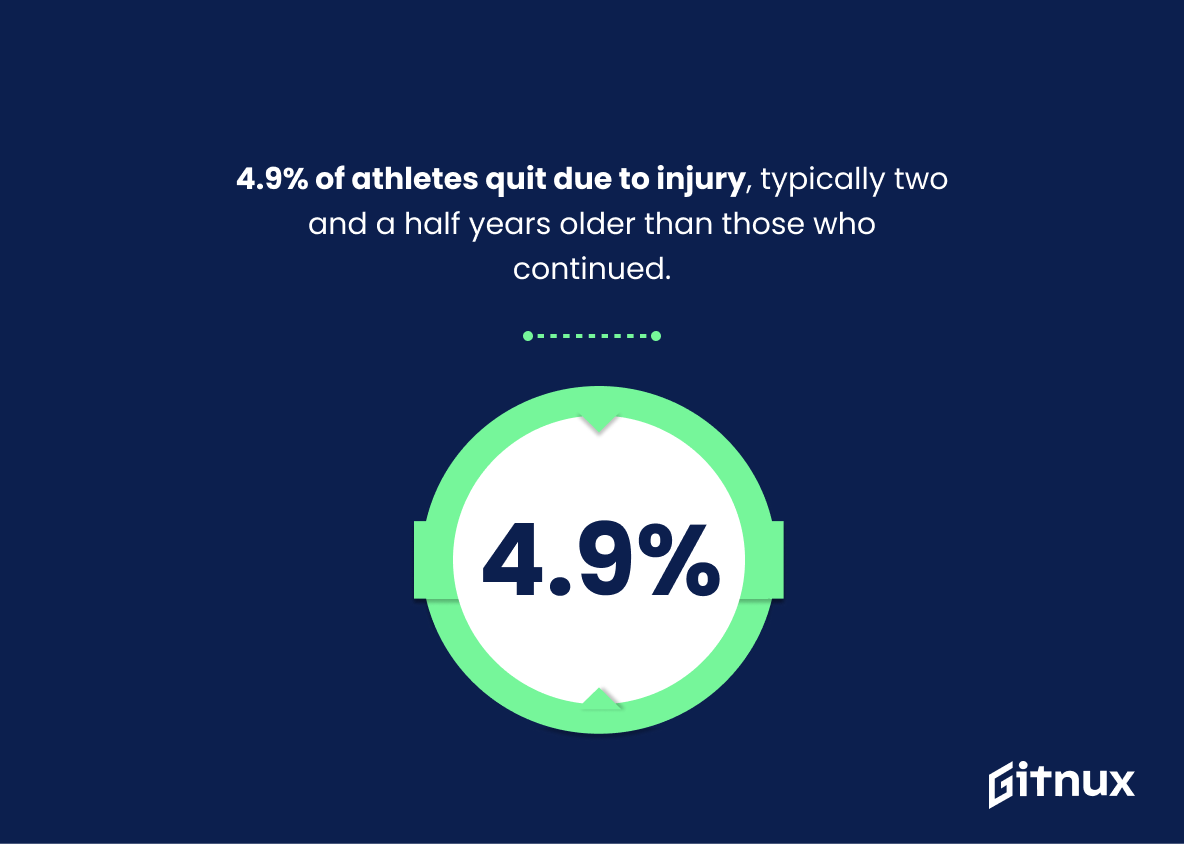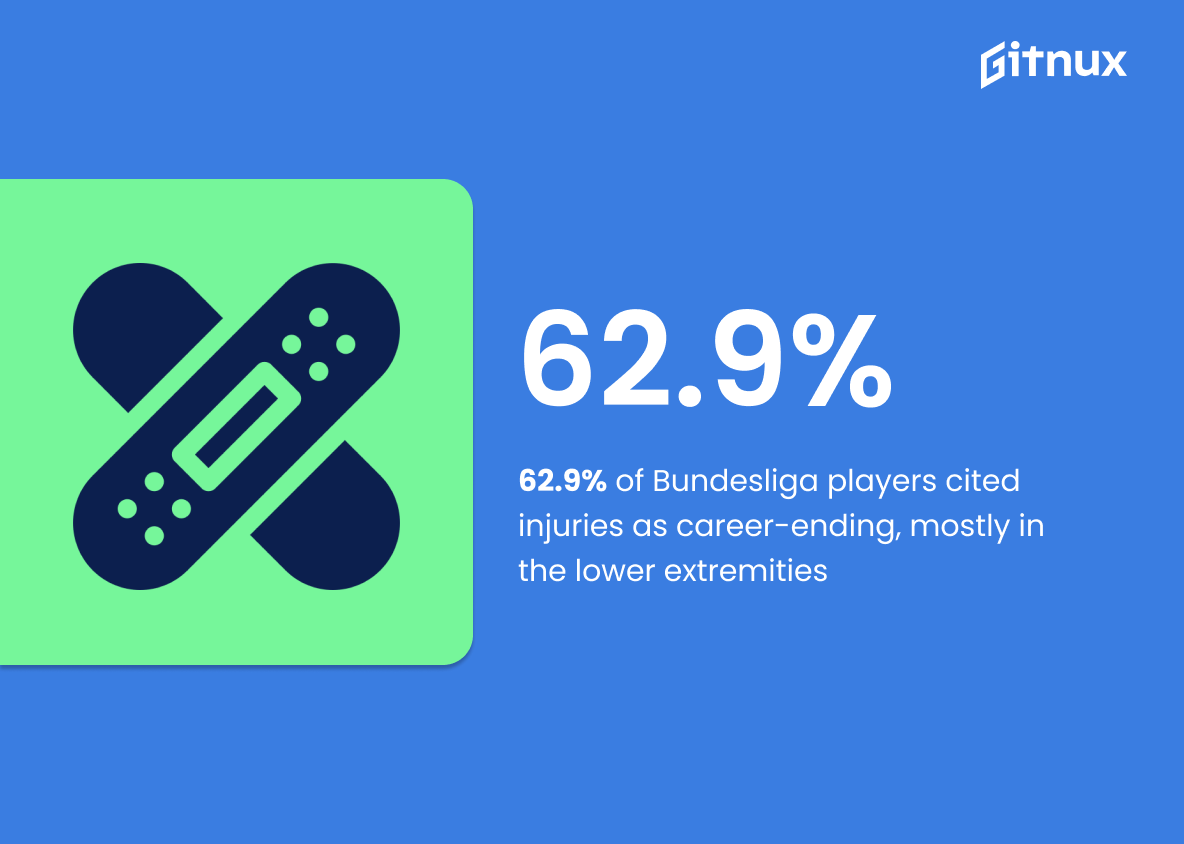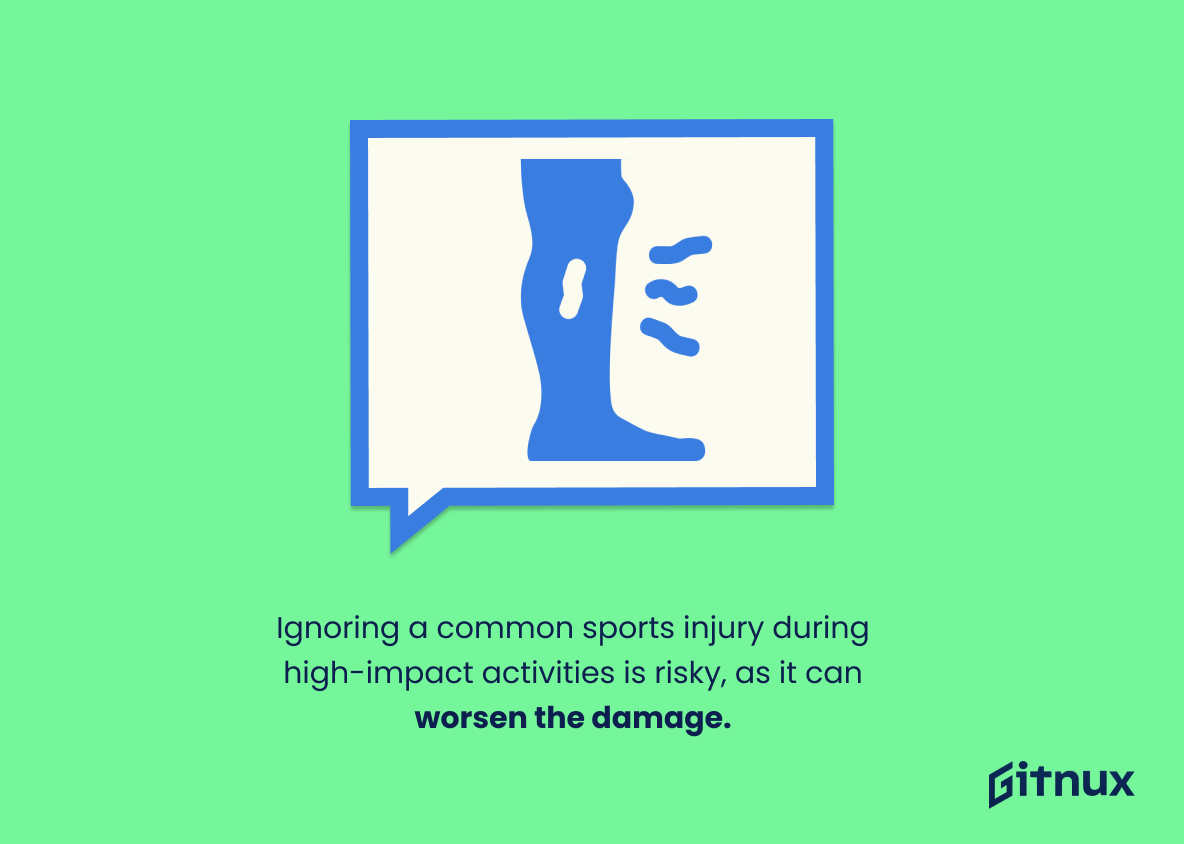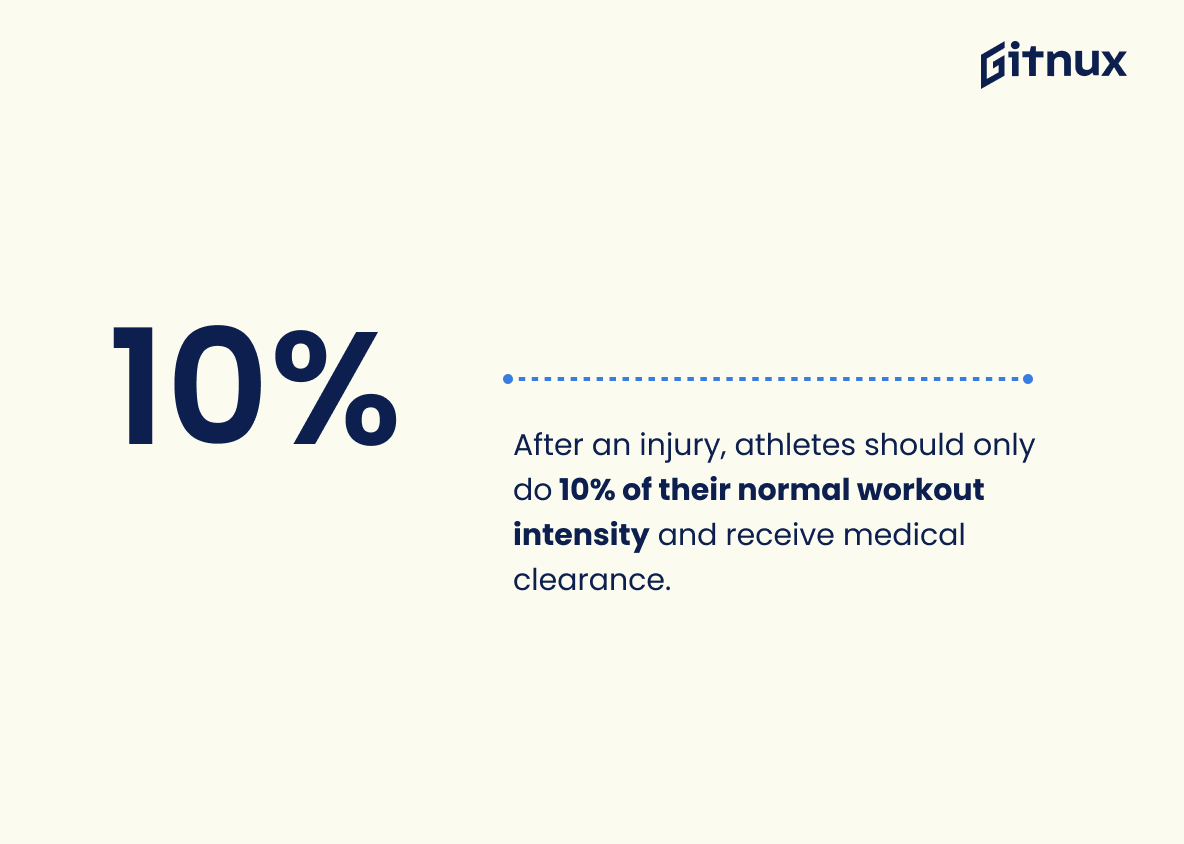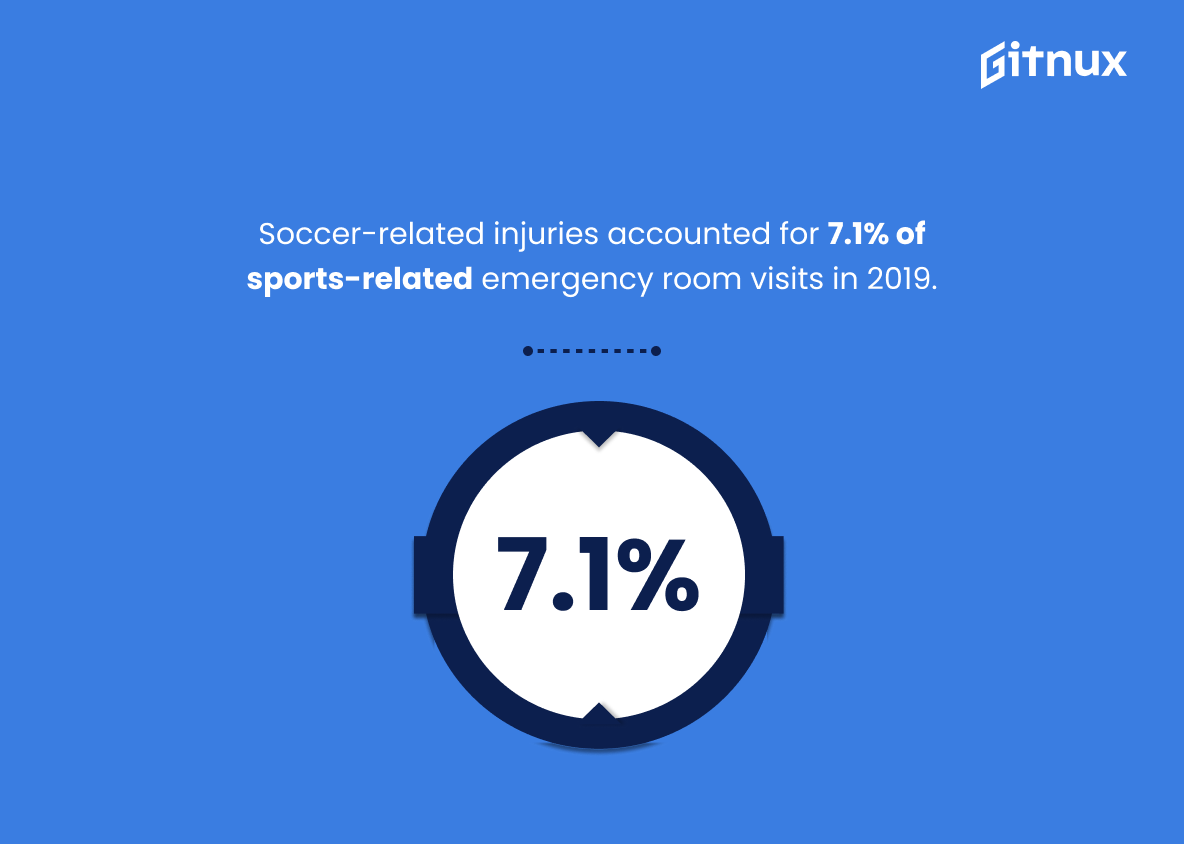Athletes are constantly pushing their bodies to the limit in order to achieve their goals. Unfortunately, this often leads to injuries, which can have a huge impact on their performance and career.
In this article, we will explore the statistics surrounding athlete injuries, and discuss how these injuries can be prevented. We will also look at the long-term effects of injuries on athletes, and how they can recover from them. So, let’s dive in and take a closer look at athlete injuries and how they can be managed.
Athlete Injuries: The Most Important Statistics
4.9% of athletes reported ending their sport career due to injury, and were on average two and a half years older than athletes who continued their sport.
Soccer-related injuries accounted for 7.1% of sports-related emergency room visits in 2019.
Athlete Injuries: Statistics Overview
Soccer is the world’s most popular sport, but it is associated with high injury rates, with professional soccer players sustaining 4-35 injuries per 1000 hours of exposure, which is higher than amateur athletes.
It highlights the importance of understanding the risks associated with different sports and the need for proper safety measures to be put in place to protect athletes from injury.
The injury rate in professional football is 8.1 injuries per 1000 hours of exposure, and during games the rate is up to 36 injuries per 1000 hours.
This statistic is important because it shows the increased risk of injury that athletes face when they are playing in a game compared to when they are practicing. It highlights the need for proper safety protocols and medical care to ensure that athletes are protected from injury.
The 2021 AFLW season saw a decrease in ACL injuries from 7.5 to 3.22 injuries per 1000 playing hours, which is a significant improvement.
The AFLW is taking steps to reduce the number of ACL injuries sustained by female athletes. This is important because ACL injuries can be very serious and can have long-term effects on athletes’ health and performance.
By reducing the number of ACL injuries, the AFLW is helping to ensure that female athletes can continue to play safely and at a high level.
Female athletes are 2-8 times more likely to experience an ACL tear than males.
It highlights the need for further research into why female athletes are more prone to ACL tears and how to prevent them.
It also emphasizes the importance of providing female athletes with the necessary resources and support to reduce their risk of injury.
4.9% of athletes reported ending their sport career due to injury, and were on average two and a half years older than athletes who continued their sport.
These data show the prevalence of athletes ending their career due to injury, as well as the fact that older athletes are more likely to suffer from such injuries.
This information can be used to inform preventative measures, such as targeted injury prevention programs, to reduce the number of athletes ending their career due to injury.
62.9% of Bundesliga players surveyed reported that injuries were the reason for their professional careers ending, with the majority of injuries located in the lower extremities, specifically the knee and ankle.
The prevalence of injuries in professional sports, particularly in the lower extremities is high and can have a significant impact on a player’s career.
Believing that a common sports injury sustained while practicing during a high impact activity will simply go away on its own is a dangerous mentality, as it can result in even further damage and injury.
This matters in the context of Athlete Injuries Statistics because it emphasizes the importance of seeking medical attention for sports injuries, rather than trying to “walk it off”.
This can help to reduce the number of serious injuries sustained by athletes, and can help to ensure that athletes are able to return to their sport in a safe and healthy manner.
After an injury, athletes should only do 10% of their normal workout intensity and receive medical clearance.
This matters in the context of Athlete Injuries Statistics because it emphasizes the importance of proper medical care and gradual rehabilitation following an injury. By only doing 10% of their normal workout intensity, athletes can avoid further injury and ensure that they are able to return to pre-injury performance levels.
Basketball is the leading cause of team sport injuries in 2019, with fractures, facial injuries, deep thigh bruises, ankle sprains and knee injuries being the most common.
Taking safety precautions when playing basketball, such as wearing protective gear and learning proper techniques, in order to reduce the risk of injury is high.
Soccer-related injuries accounted for 7.1% of sports-related emergency room visits in 2019.
Soccer-related injuries, which can include sprains, fractures, tears and bruises in the lower extremities, have a significant part of all sport-related injuries. This information can be used to inform preventative measures and safety protocols to reduce the risk of injury in soccer players.
Conclusion
In conclusion, athlete injuries are a serious issue that needs to be addressed. The statistics show that the number of injuries is increasing and that the severity of injuries is also increasing. It is important to take steps to reduce the risk of injury, such as proper warm-up and stretching, proper nutrition, and adequate rest.
It is also important to recognize the signs of an injury and seek medical attention if necessary. By taking these steps, athletes can reduce their risk of injury and help to ensure that they can continue to participate in their sport safely.
References
1 – https://journals.sagepub.com/doi/10.1177/23259671211055136#:~:text=As%20a%20complex%20contact%20sport,per%201000%20hours%20of%20exposure.
2 – https://barcainnovationhub.com/injury-frequency-in-professional-players-an-analysis-of-its-epidemiology-in-football/
3 – https://www.ecu.edu.au/newsroom/articles/opinion/why-do-female-athletes-seem-to-get-more-injuries-than-men
4 – https://www.yalemedicine.org/news/sports-injuries-gender#:~:text=According%20to%20research%2C%20an%20ACL,Gardner%20says.
5 – https://www.tandfonline.com/doi/abs/10.1080/17461391.2011.566365
6 – https://link.springer.com/article/10.1007/s00167-021-06684-8
7 – https://certifiedfoot.com/top-five-most-common-reasons-for-sports-injuries/
8 – https://certifiedfoot.com/top-five-most-common-reasons-for-sports-injuries/
9 – https://mosportsmed.com/what-sports-cause-the-most-injuries/
10 – https://mosportsmed.com/what-sports-cause-the-most-injuries/
